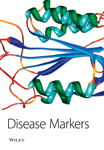HLA Haplotype A33-B58-Cw10 May Modulate Radiographic Development of Bamboo Spine in Taiwanese Patients with Primary Ankylosing Spondylitis
Abstract
Objective: To evaluate the possible relationship between HLA alleles and bony ankylosis of the spine (bamboo spine) in Taiwanese patients with ankylosing spondylitis (AS).
Methods: A small cohort of HLA-B27 positive AS patients was conducted to analyze the effects of alleles and haplotypes on the development of bamboo spine. DNA typing of HLA class I and class II genes were performed by SSP method on primary ankylosing spondylitis patients with bamboo spine (n = 84) and spinal enthesopathy controls (n = 228). Odds ratios with 95% confidence intervals and P value were estimated. Determination of the most probable HLA haplotypes on all patients were constructed by comparison of the alleles carried by each patient with the HLA haplotype database established in Taiwanese population studies using homozygosity approach [1] and by expectation-maximum algorithm [2].
Results: Allele frequencies of HLA A33, B58, Cw10, DR4, DR17 and DQ2 were significantly lower in bamboo patients as compared to non-bamboo controls. In contrast, allele frequencies of A24, B54, Cw15, DR11 and DR14 were significantly higher in bamboo patients. Less remarkably, high frequencies of B39, B51, Cw1 and Cw2 alleles were also noted in bamboo patients. Considering linkage disequilibria of alleles in haplotypes, HLA-A11-B27-Cw12 was the most common haplotype in both bamboo and non-bamboo groups (95.23% vs. 91.22%, respectively, P = 0.238). Haplotypes A33-B58-Cw10, A33-B58-Cw10-DR13 and A33-B58-Cw10-DR17 were significantly lower in bamboo patients as compared to those in controls (P < 0.001, P = 0.001, P = 0.002, respectively).
Conclusion: Haplotypes A33-B58-Cw10, A33-B58-Cw10-DR13 and A33-B58-Cw10-DR17 showed a strong association with bamboo spine in Taiwanese AS patients. Detection of such haplotypes might be a great aid in the management of patients with the disease.




